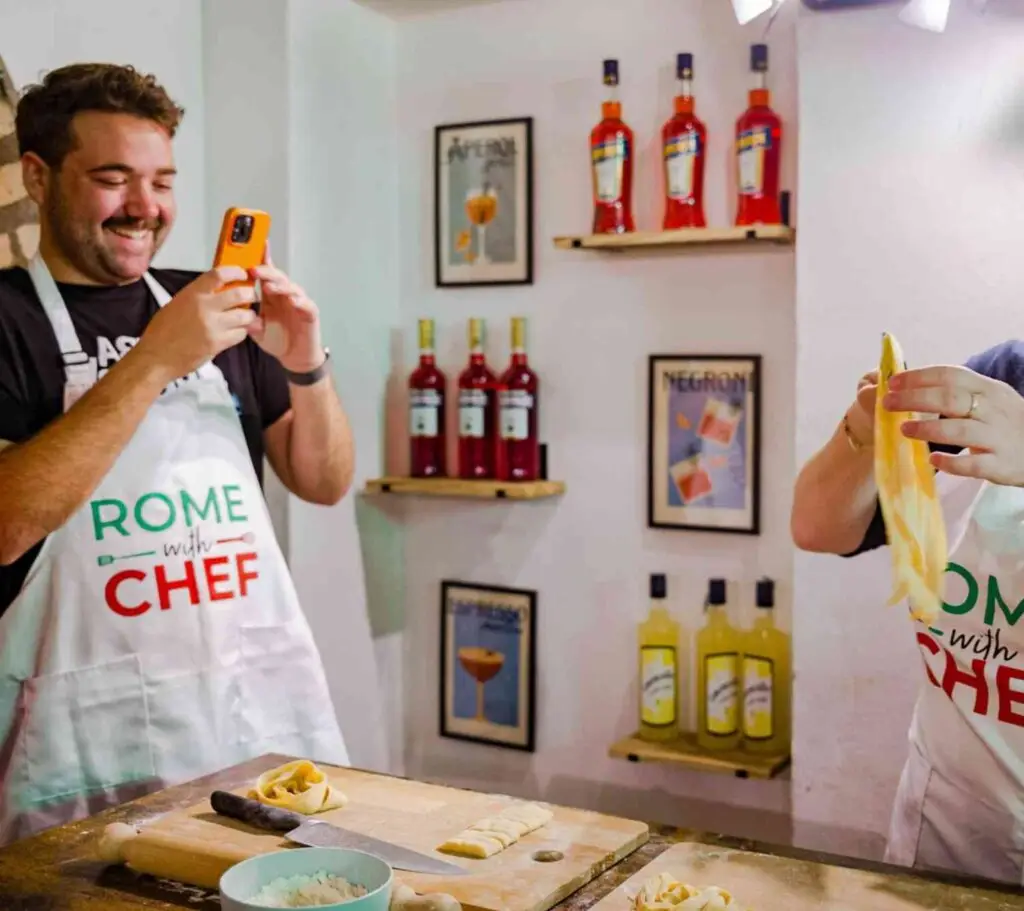Pizza is as quintessentially Italian as designer sunglasses, Aperol Spritz, and devastatingly poor parking – even when there’s plenty of available space. But pizza is also divisive, with Romans, Neapolitans, and Sicilians arguing among themselves about who invented it first (Neapolitans) and whose version is best (something I won’t commit to paper for fear of… repercussions).
The only way to find out your favourite types of Italian pizza is to try each one for yourself. Lucky for you, here’s a short intro to each pizza type, what sets it apart, and where to find it in Rome.
1. Neapolitan Pizza
When you think of classic Italian pizza, you’re likely picturing the iconic Neapolitan style, with its bubbly, slightly blackened crust and tricolore Italian flag of ingredients: silky white mozzarella, plump red tomatoes, and fresh green basil.
The softness of a Neapolitan crust partly comes from the extreme temperature at which it’s cooked (900°F in a wood-fired oven). The air bubbles in the dough swell, char, and blister before the interior crumb has dried out and hardened, leaving that softer centre and crispy cornicione (edge).
Naples’ most famous export is the Pizza Margherita, invented by the fabulously named Raffaele Esposito, who rustled up something patriotic-looking to stir the soul of the visiting Queen Margaret of Savoy with her husband, King Umberto I of Italy in 1889.

Some claim this was the first time mozzarella had ever featured on a pizza, which, if true, makes Raffaele something of a maverick in an otherwise conservative food culture. That said, pizza had existed long before Raffaelle’s day as an affordable, filling flatbread for the peasantry and urban poor.
Where to eat Neapolitan pizza in Rome: Al forno della soffitta
2. Roman Pizza
Loath to be outdone by their Neapolitan neighbours, the Romans created a pizza that was crispier, owing to its incorporation of olive oil into the dough. Roman-style pizza boasts a thin, crunchy base, with sauce and toppings generously spread to nearly the edges of the crust.
Roman-style pizza is also baked rapidly, for about three minutes at around 700°F. But because the base is so much thinner, crispier, and self-supporting, it’s structurally different to a Neapolitan pizza. If you pinch a slice at the edges and hold it up, you’ll find it never sags in the centre, unlike the softer pizza napoletana.
Where to eat in Rome: Plenty of options (listed here), but we especially like Pizzeria Ostiense
Make pizza from scratch on a family-friendly Pizza & Tiramisù Cooking Class in Rome!
3. Fried Pizza (Pizza Fritta)
Shortly after moving to Italy in 2015, I took myself down to Naples for a foodie weekend.
Reader, it changed my life.
Words cannot convey the deep-fried pizza from Antica Pizza Fritta da Zia Esterina Sorbillo (€5). It was a quasi-religious revelation. Love at first bite. Crunchy confirmation that the best things in life are simple, and—more often than we’d like—unhealthy.
The half-moon pouch of pizza had been stuffed with ricotta, provola, tomato, pepper and scottona beef before being dropped in a deep fryer and cooked until golden. As I bit into it, surrounded by similarly content locals on the bustling Via Toledo, I remember it oozing the creamiest melted cheese I’d ever tasted, seamlessly blending with the sweet tomato and salty scottona. Most miraculously of all, it was untouched by the oil and not remotely greasy.

Where to eat fried pizza in Rome: La Masardona
4. Sicilian Pizza
Funnily enough, Sicilian pizza is better-known in the US than it is in Italy, where Roman and Neapolitan pizza styles have monopolised the domestic market. But while Sicilian pizza in the States is typically square, the same shape as the pan pizzas prepared by Sicilian immigrants and their descendants in Boston, New York, Providence and Detroit, Sicilian pizza proper is not.
Even in Sicily, you have different varieties of ‘Sicilian’ pizza, from the pizzòlu of Syracuse (a circular, stacked, stuffed pizza) to the sfincione of Palermo (deep, fluffy pizza baked in a long rectangular tray). What really sets Sicilian Pizza apart is the richness of toppings, with plenty of tomatoes, herbs, onions and anchovies as well as the usual tomato and cheese combos.
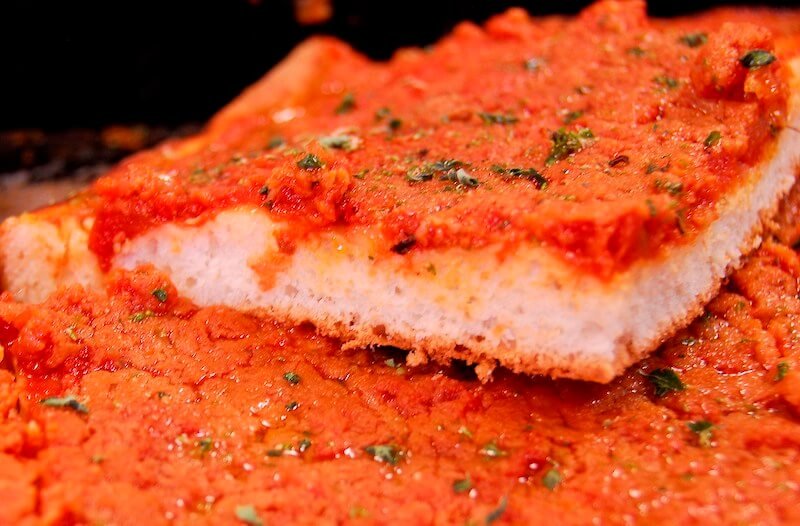
Where to eat Sicilian pizza in Rome: Piccola Palermo
5. Pizza by the Slice (Pizza al Taglio)
Pizza al taglio (pizza by the slice) may well be Rome’s favourite fast food. Prepared, baked and displayed on bakery countertops in sheet pans, this rectangular pizza is served by the weight and according to toppings. Ordering is easy and, like most things in Rome, interactive. You just point to the pizza you want, wait as they slide the knife the length of the rectangle, and say ‘when’ (basta) when they reach the right portion and you’re ready for them to cut.
Perhaps the most popular chain, Alice (pronounced Ali-chay), excels at crafting thin, crispy slices with diverse, mouthwatering toppings. With around 60 locations across Rome, you’re never far from a perfect slice, and Alice is especially great for budget travellers using the Too Good To Go app to snag a tasty pizza box for as little as €4.99.
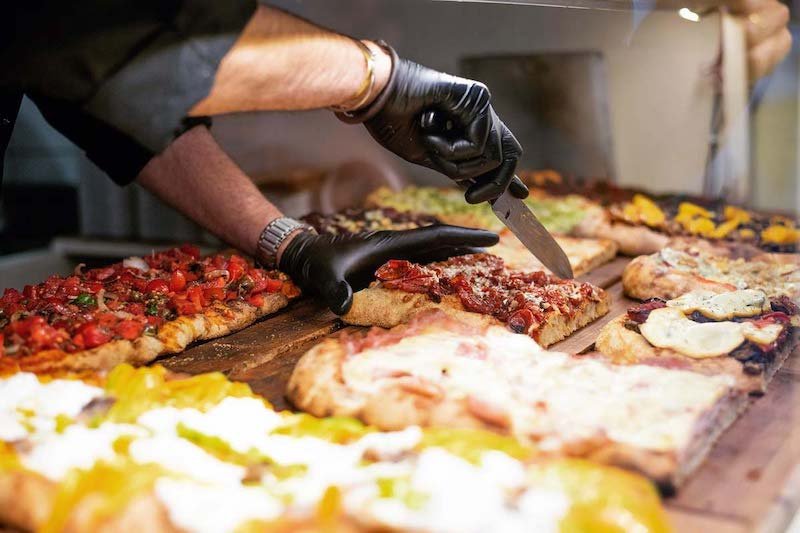
Where to eat in Rome: Alice Pizza
6. Pizza Bianca
Literally meaning “white pizza” though closer to a plain yeast flatbread, pizza bianca is a simple yet scrumptious staple of Roman baking. Some bakeries make it softer, like a focaccia, while others make it crunchier, with an extra drizzle of olive oil.
Pizza bianca is often enjoyed plain or sliced open and filled with delectable fillings like mortadella and pistachio or prosciutto, parmesan shavings and rocket.
Where to eat in Rome: Roscioli (city centre), Pane Garbato (peripheries)
7. Pinsa
It might look like a spelling mistake, but pinsa is a modern recipe perfected by baker Corrado Di Marco in 2001. Inspired by his grandfather’s technique, Di Marco developed a secret dough blend of wheat, soy, rice flours, and dried wheat sourdough.
The main difference between pizza and pinsa lies in the dough’s lightness. Pinsa is genuinely lighter and easier to digest since it contains a high water content (around 80%), uses sourdough, undergoes at least 24 hours of, and is made from a mix of wheat, rice, and soy flours instead of just wheat. This creates a crust that’s crisp on the outside and soft on the inside, making pinsa an ideal (and vegan) alternative for those seeking a lighter, more digestible option without compromising on flavour.
Where to eat pinsa in Rome: Pinsere
8. Calzone
Originating from Naples, the calzone—a folded pizza—derives its name from “calza,” meaning stocking, due to its stuffed, sock-like shape. Found on menus throughout Rome, popular fillings include mozzarella, ricotta, prosciutto cotto, mushrooms, and tomato sauce. Just be careful wearing white shirts or pants when ordering a calzone or you might leave the pizzeria in tie-dye.
Where to eat in Rome: Pizzeria della Madonna dei Monti
9. Frozen Pizza (Pizza Surgelata)
That’s right, even Italians, when no one’s looking, pop a supermarket frozen pizza in their trolley.
A sin for which they must attend Mass so their priest can grant forgiveness.
Popular brands like Buitoni, Cameo, and various store brands line supermarket aisles are shamefully hidden away deep in the frozen section. And while most Italians would still insist that these frozen pizzas far surpass international chains like Domino’s or Papa John’s, the jury is still out.
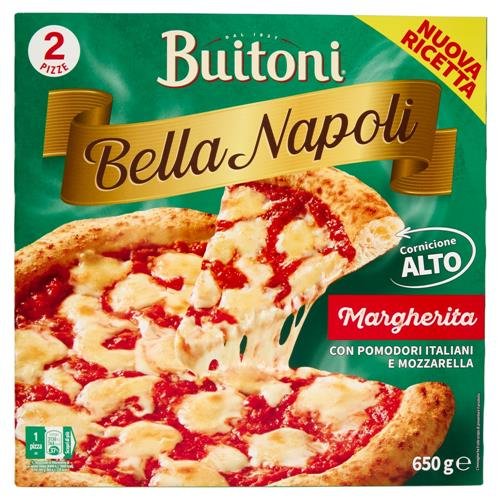
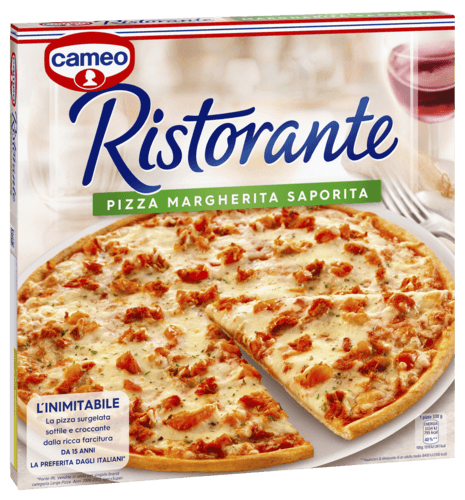
Perfect the Art of Pizza through a Rome with Chef Cooking Class!
Hungry for more?
If this list has whetted your appetite, why not experience Rome’s culinary culture first-hand? Join us on our Semi-Private Rome Food Tour to discover hidden gems, sample incredible street food (yes, including pizza), and learn the secrets behind every bite from a local expert.
Or roll up your sleeves and learn to make your own Italian classics in one of our hands-on Rome Cooking Classes. From fresh pasta or pizza to creamy tiramisù, it’s the perfect way to turn your Roman vacation into something to savour.
Treat your tastebuds to a Rome Pizza Class with 3 Traditional Cocktails!







